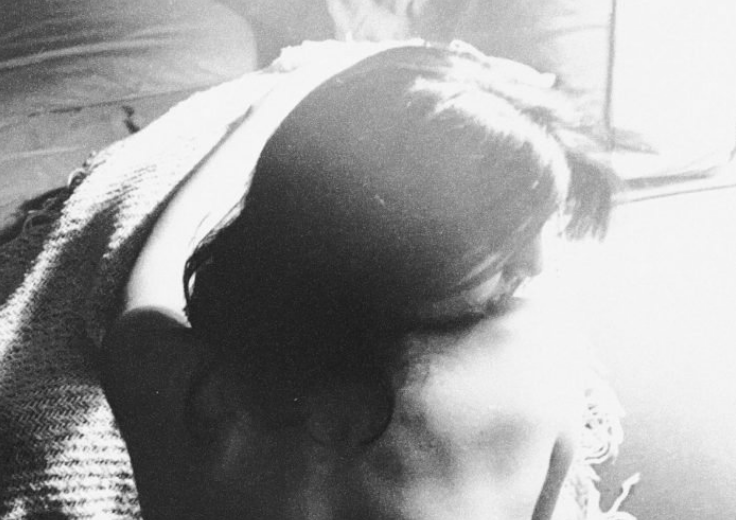I rested my hand on her trunk, and I admired the cape of green and yellow leaves hovering above me.
It was a sweltering summer day and a relief to be standing in the shade of the old oak tree. I bent my leg and lifted my chin as somebody told me to, but I barely smiled for the camp photograph. I stared off into the empty fields as the photographer tried to coax emotion from me.
I felt a sudden wave of hot air down my spine, and then I fell off into an abyss. Nausea swirled in my stomach like rotten milk. A feverish, sweaty chill broke through my eight-year-old body, and an itchy, red rash made its way onto my torso.
~
I believe it was that moment—when I first withdrew inside myself to find the quiet. One by one, everything that was me dissolved into the air, and I felt nothing. Leaving the present moment was something novel for me.
Although, that sick feeling I had? I’d felt that many times before. I hid it away behind a smile and bouts of nervous laughter. Even as a young girl, I knew this happened because I hated my body.
I can’t recall when or where I learned the word “fat.” I just know the external context meant nothing to me. “Fat” described the battle I was enduring within myself, the discomfort of being in my own skin, and the longing to go somewhere else.
It may have been the turmoil of my family home that gave rise to my unrest. Or maybe it was the ominous feeling I felt as a child coming home each day to chairs tossed, and lamps turned on their heads. Still, the years meticulously washed the past away, and forgiveness was found—except the undoing never happened.
As a psychology student, when I read the term “Body Dysmorphia” in my textbook, my whole body caved inside itself. I knew this was me. I signed up for counseling through the graduate program at my university. I could hardly catch a breath in between my words when I spoke to the therapist.
She was not convinced, though. “This dysmorphia,” she felt, “wasn’t interfering too much.” I learned behavior strategies that would help rationalize “this dysmorphia” all away. The tricks she gave me certainly helped, but not entirely.
She hadn’t accounted for the self-loathing that I buried deep within my skin. She didn’t know that there was once a little girl behind that big, fake smile—one who had cut the ties that once bound her to a well of infinite love inside her heart.
I came across the photo of myself standing beside that old oak tree some years ago. The little girl was a stranger to me. She was a stranger even to herself. I was this stranger.
“Are we taught to love ourselves, or are we born with an inherent knowledge of our infinite grace?”
I didn’t have the answer to my question because knowing this meant I knew this love intimately.
“One day,” I told myself, “maybe I will go there. Maybe I will see I am worthy of loving myself.”
Maitri and the teachings of Pema Chödrön have opened this door. I am learning to bring compassion from my own heart to every part of my body that I have harshly shamed.
These days, I am kinder to the piece in myself that tells me to hide, leave, or escape my own presence. I stay with it; I stay with it all; I am present.
Sitting in my mess has not been easy—it is haunting. But I am here for it.
I am here for all that is disjointed.
Because, in this offering of true acceptance, an endless river of self-love lives. It is where I find the internal resources to share effortlessly and purely with others.
“May I be happy. May I be healthy. May I love myself as I am. May all beings be happy and healthy.”











Read 21 comments and reply